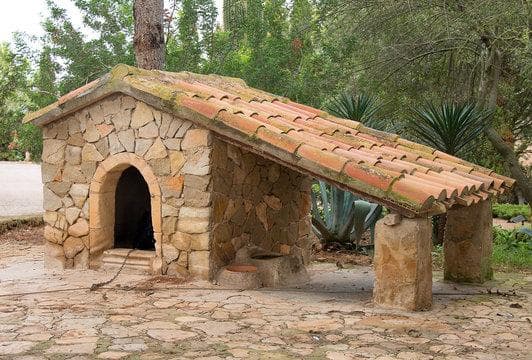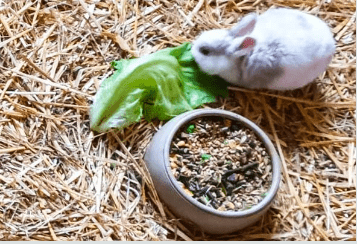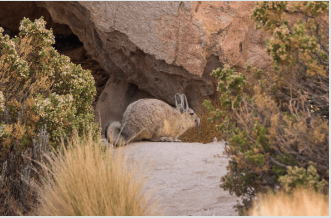The animal kingdom brims with wonders, doesn’t it?
And while lions and tigers get much of the spotlight, there are unassuming animals that are just as worthy of our attention.
Enter the Viscacha.
As a pet expert with years of knowledge about these unique creatures, I’ll guide you on this intriguing journey into the world of these often misunderstood animals who have fascinating character traits.
Let’s dive in!
Table of Contents
What Are Viscachas?
Ever heard of a viscacha pet? No? Let’s remedy that. Viscachas are rodents often mistaken for their lookalike cousins. But who are these cousins? And where do these creatures actually hail from? Dive in, and let’s unfold these mysteries.
Difference Between Viscachas and Chinchillas
At first glance, the resemblance is uncanny. But dig deeper, and you’ll see distinct differences. Viscachas sport longer tails and have a more rugged appearance.
Meanwhile, chinchillas, while fluffy and soft, lack the wild allure of viscachas. Knowing the difference might just save you some bucks when discerning viscacha pet prices!
Geographic Distribution and Natural Habitat
Let’s embark on a virtual tour. Viscachas hail from South America, sprinkling across the Andes and Argentina. Their home? Rocky terrains and steep cliffs. An environment that not just shapes them, but refines their astounding survival skills too.
Physical Characteristics and Adaptations
Sturdy legs, thick fur, and sharp vision – these are just a few cards up the viscacha’s sleeve. Their physical attributes are an ode to their rough habitats. Their adaptability? Truly commendable. Nature sculpted them well for their mountainous homes.
Misconceptions and Misunderstandings about Viscachas
With knowledge comes clarity but without it? A breeding ground for myths. Viscachas have had their share of misconceptions. Some are amusing, others… not so much. Let’s debunk some, shall we?
Cultural Beliefs of “Chinchilla Rabbits”
Dubbed “Chinchilla Rabbits” in folklore, viscachas have faced identity crises. While bearing some resemblance, the viscacha’s unique traits set it apart. Breaking this myth does wonders for its true recognition.
Conservation Status and Threats
Not all stories have happy endings. Despite their adaptability, viscachas face threats. Habitat loss and hunting are menacing shadows that loom large. A narrative we, as stewards of Earth, need to rewrite.
In nature’s intricate web, viscachas play their part. They’re not just mountain residents but vital ecosystem engineers. Their activities promote soil health and boost plant diversity. Quite the unsung heroes, wouldn’t you agree?
Can You Have Viscachas as Pets?
The charm of the viscacha beckons many. But should you bring one home? Considering their specific needs and the viscacha pet price, there’s much to ponder.
Legal Considerations and Permits
It’s not just about wanting; it’s about legality. Before dreaming of a pet viscacha, dig into local regulations. Some places give a green light, others a stern no. Always better to be safe than sorry!
Housing and Enclosure Requirements
They’re not your typical caged rodent. Viscachas demand spacious enclosures, mimicking their natural expanses. Think rock structures and climbing opportunities. Your home becomes theirs; make it worthy.

Dietary Needs and Nutrition
Feeding a viscacha isn’t about dishing out typical pet store treats. Their diet is primarily herbivorous, relishing an array of plants, shrubs, and lichens.
Fresh hay, leafy greens, and occasional fruits can be on the menu. Moreover, as water extractors from food, they’ll need a consistent supply of fresh water to quench their thirst.

The Fascinating Behavior of Viscachas
Move over squirrels; viscachas are in town. Their behavior is nothing short of a spectacle. From their social quirks to their nocturnal escapades, there’s never a dull moment.
Social Structure and Communication
Viscachas thrive in social groups called colonies. Their interactions are woven with a blend of vocal chatters, postures, and tail flicks. While seemingly whimsical, these cues are pivotal for maintaining group dynamics and asserting dominance or submission in their hierarchical structure.
Unique Feeding Habits and Diet
Their palate is quite eclectic! Preferring the herbivorous route, viscachas munch on a diverse range of plants, shrubs, and lichens. This dietary variety not only sustains them but also aids in the essential absorption of water from their food, a smart strategy in the sometimes arid terrains they inhabit.
Burrowing Behavior and Shelter Construction
These architects of the animal world dig intricate burrow systems that serve as both homes and safe havens.
With multiple entrances and exits, their underground labyrinths are strategic masterpieces, ensuring quick escapes from potential threats and providing the perfect cuddle spot during colder days.
Nocturnal Activities and Adaptations
The magic unfolds as the sun dips. Viscachas, with their nocturnal inclinations, come alive, making the most of the cooler temperatures and the cloak of darkness.
Their large eyes, adapted to moonlit escapades, capture even the faintest glimmers, ensuring they navigate their rocky terrains with precision and grace.
The Mysteries of Viscacha Reproduction
Reproduction, while a common thread among species, often carries with it unique rituals and mysteries. The viscacha, with its mountainous abode and captivating presence, has its own tale to tell in the dance of life.
Mating Behavior and Reproductive Strategies
When love is in the crisp mountain air, the viscachas are not to be left behind. As the mating season descends, males put on an impressive display of calls and chases, each trying to outdo the other to catch a potential mate’s attention.
Theirs is not just a game of charm but also of dominance. The strongest males, exhibiting vigor and vitality, often emerge triumphant, securing the right to mate and ensuring the continuation of robust genes.
Gestation Period and Birth of Viscacha Offspring
After the intense courtship rituals, the real magic begins. A female viscacha goes through a gestation period of around 130 days, an investment of time and energy to nurture the future.
The result? Typically, 1-2 offspring, tiny marvels that are both vulnerable and promising. These little beings, while fragile, represent hope for the next generation of these mountain dwellers.
Parental Care and Development of Young Viscachas
Parenthood among viscachas is nothing short of admirable. Both mother and father partake in the responsibilities, a testimony to the species’ collaborative spirit. From teaching their offspring the nuances of survival to shielding them from potential threats, the parental role is multifaceted.
As days roll into weeks, these young viscachas, under the meticulous guidance of their elders, grow rapidly. Soon, they are well-equipped to face the world’s challenges, ready to write their own chapter in the grand narrative of life.
Conclusion
From misunderstood beings to captivating creatures, viscachas have a narrative worth sharing. Their resilience, charm, and behavior have given us insights and marvels.
Perhaps, next time you ponder upon the viscacha pet price, you’ll see beyond the tag – into the heart of a mountain dweller.
FAQs
Are viscachas and chinchillas the same animal?
No, while they bear similarities, viscachas, and chinchillas are distinct species with noticeable differences in appearance and habitat.
Is it legal to have a viscacha as a pet?
The legality of keeping viscachas as pets varies by region, so it’s essential to consult local regulations before considering one.
What role do viscachas play in their ecosystem?
Viscachas are vital ecosystem engineers, promoting soil health and boosting plant diversity through their activities.
Alina Hartley is a small-town girl with a ginormous love of bearded dragons. It all started with Winchester, a baby bearded who was abandoned at the shelter by his former owners because of a birth defect that caused one front leg to be shorter than the other. Alina originally went to the shelter looking for a guinea pig, but one look at Winchester and it was love at first sight. From that day on, Alina has dedicated her life to learning everything she can about bearded dragons. She loves helping new beardie parents start their incredible journey with these magnificent reptiles.
Follow her on:
LINKEDIN
TWITTER.
Read her latest articles HERE
Learn more about her HERE.

